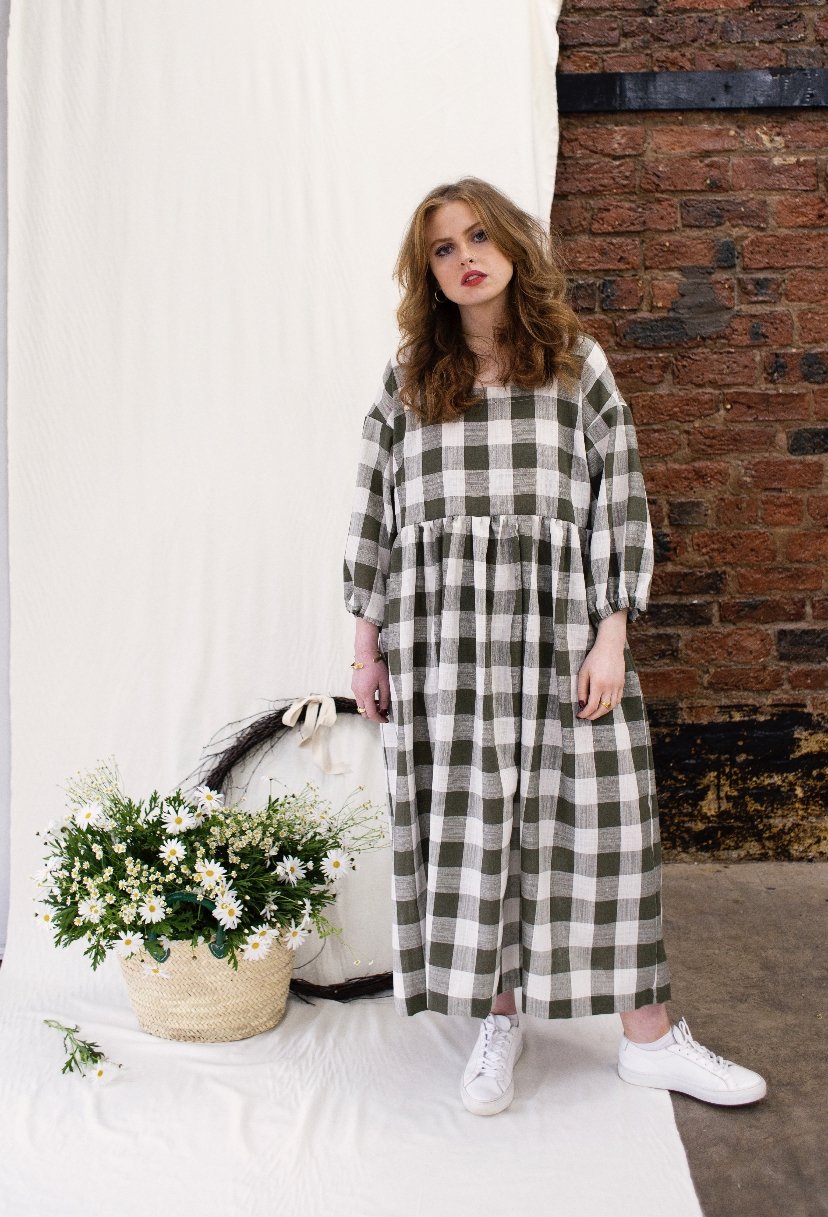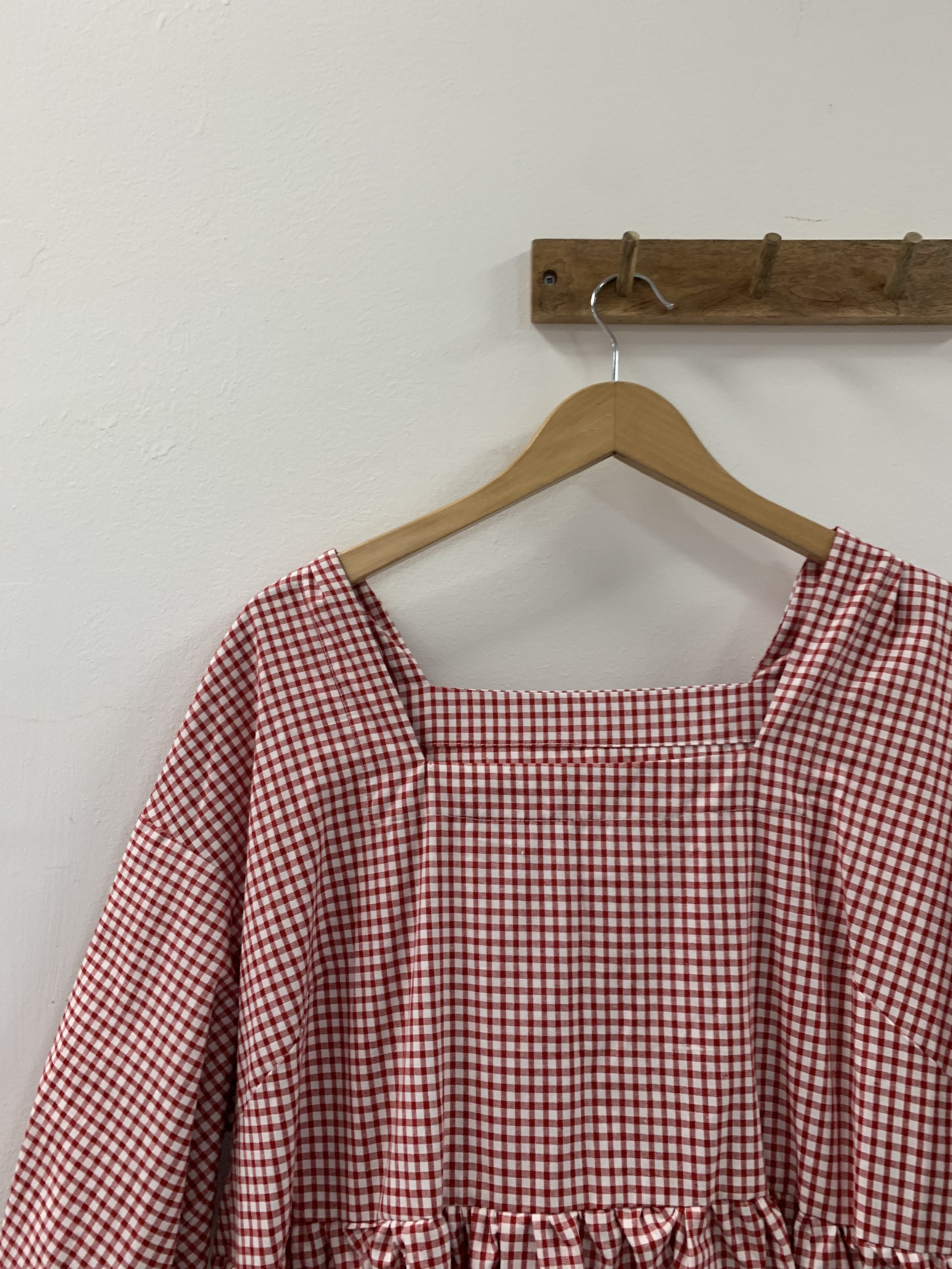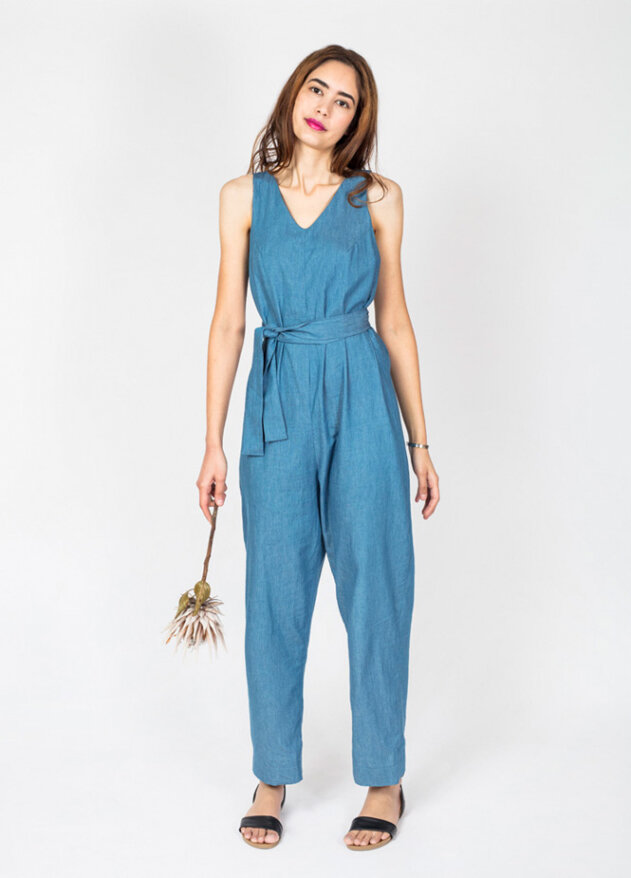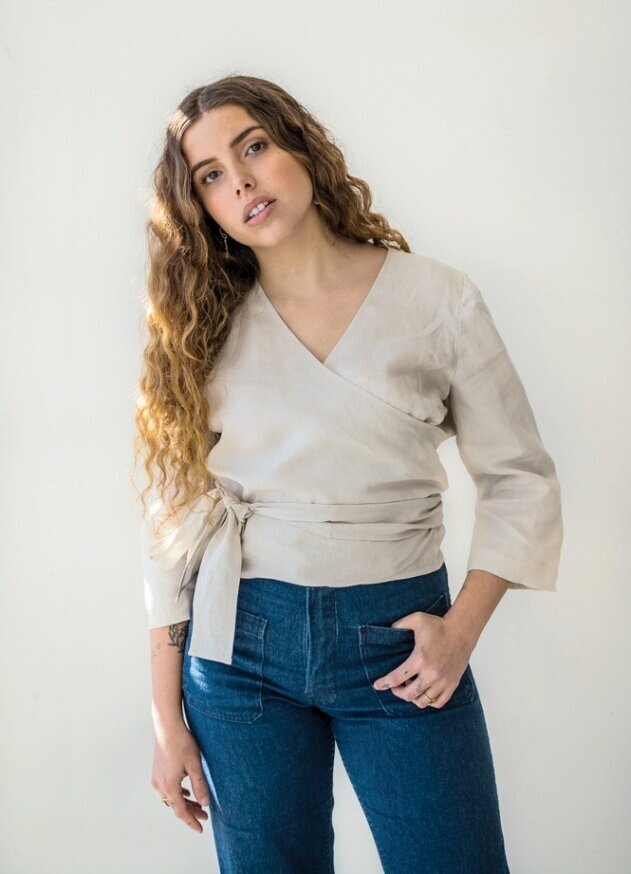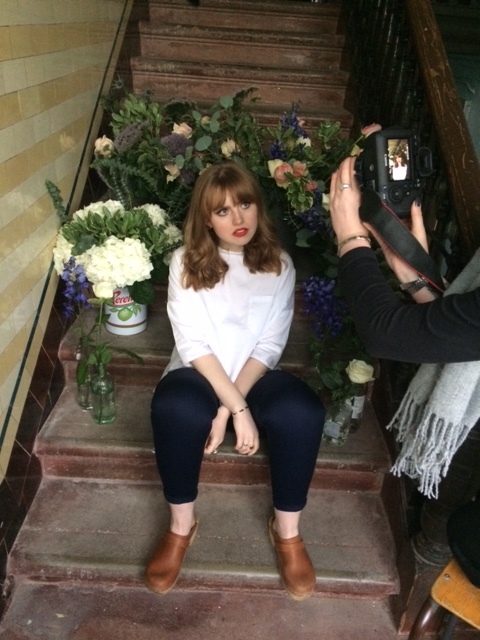The Beatrice Dress
Wafting around in a long gingham dress is one of my favourite things about summer. I have quite the collection of Phoebe dresses that I wear on rotation. They’re my go-to, everyday, ‘throw on and go’ kind of outfit and I love them! For this collection, I wanted to design something slightly dressier with a few interesting features that would take you from day to night and back again!
I’ve always been a fan of 70s style maxi dresses- think Laura Ashley and Margo from ‘The Good Life’. I wanted to create our version of this by taking some of the key elements that I love but still making it feel very ‘us’. I started looking at 1970s sewing patterns for a bit of inspiration.
Images from Pinterest
The square neckline seemed to be a recurring feature and it’s a style I’ve always loved. I started playing about with this style in fabric to see how it sat on the body as I’ve never made anything with a square neckline before. I used our Clara bodice block as a starting point and took it in slightly so it was less oversized. I then cut in to the neckline and changed the slope of the shoulders.
It took a bit if trial and error to get the right depth of the neckline. As I wanted a square neckline front and back, I was finding that if I took too much away, the dress would slip off my shoulders, so it took a few tries to get it right.
I then started working on the sleeve. I’ve never been a big fan of puff sleeves as I feel the extra volume at the shoulder distorts the line a little bit. I also wanted it to still be practical and I didn’t want to have a sleeve that was so big that it got in the way. I decided to keep the sleeve head flat but add a bit of volume to the main body of the sleeve and finish it off with an elasticated cuff so that it was comfortable to wear.
With the main elements decided, it was time to start making a toile. A toile is a mock up of a design, normally made in calico, to try out a pattern before committing to the final fabric. The toiling process can be quite wasteful so I decided to make a wearable toile in some red gingham I had left over from a previous collection. This way, I still ended up with a wearable garment rather than something that is ultimately going to go to waste. Sometimes you are lucky and the toile is perfect first time and other times it takes lots of attempts to create what you envisage in your head. Thankfully this time it was the former and I was happy with all the proportions and the fit. That meant it was time to start making it in the final fabric, a beautiful large scale gingham in khaki in a linen/cotton mix.
I was so happy with the final result! It’s quite tricky to nod to a trend or take inspiration from an era which doesn’t exactly match your aesthetic but still make it feel like it belongs in the collection. I feel the Beatrice dress takes a few key elements from the 70s dresses that I love so much but still feels like a modern, wearable piece of clothing and fits in with my Love & Squalor wardrobe.
As with all of our pieces, I always try and think about how it fits in to the collection and what other pieces it will be worn with. I wear a lot of longer dresses and I always struggle to find a coat that works well with them. That’s where the Marie coat comes in! It’s the perfect length to pair with our dresses and I’ve worn it with my Beatrice dress on so many occasions already.
I hope you’ve enjoyed this behind the scenes look at our design process. The Beatrice dress is one of our favourites and I’m sure we’ll revisit it in other fabrics and colours in the future.
Rebecca
X

